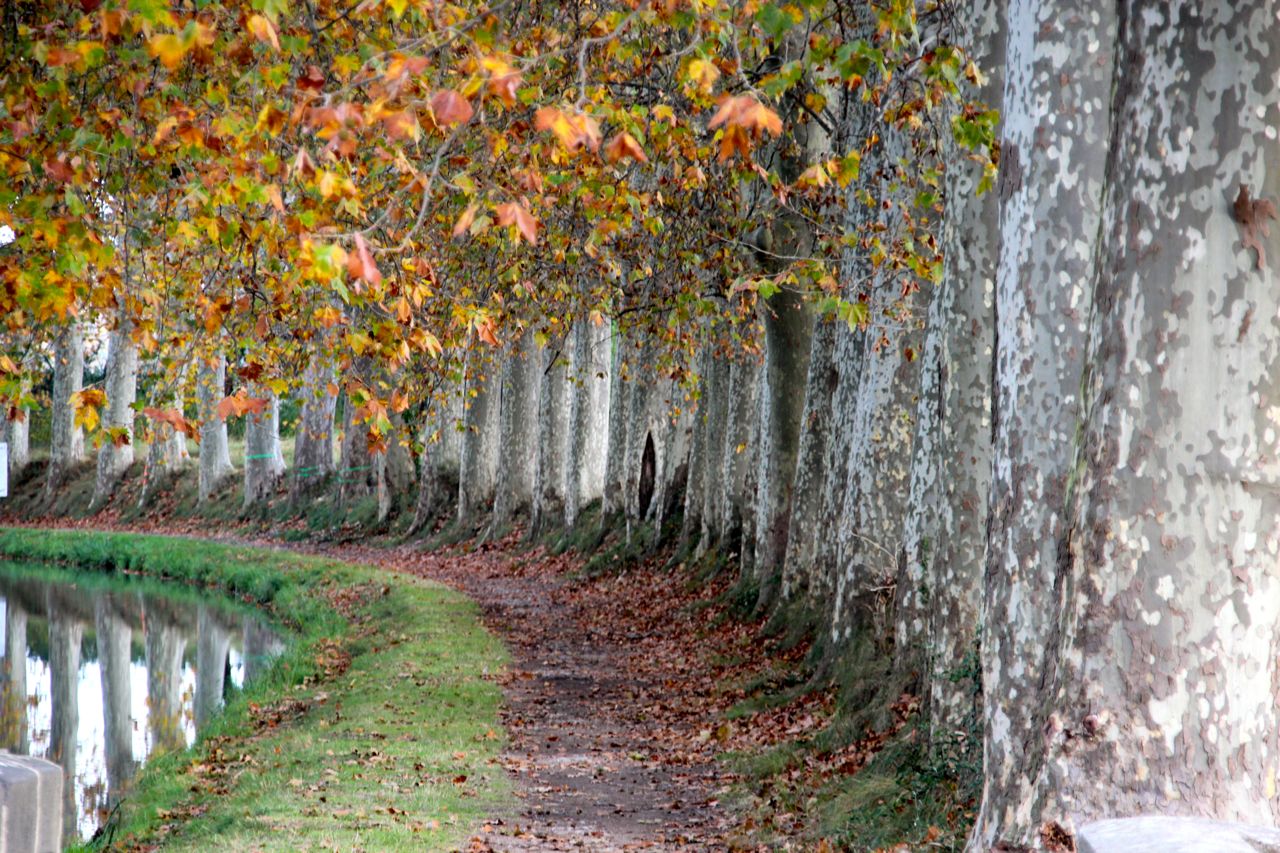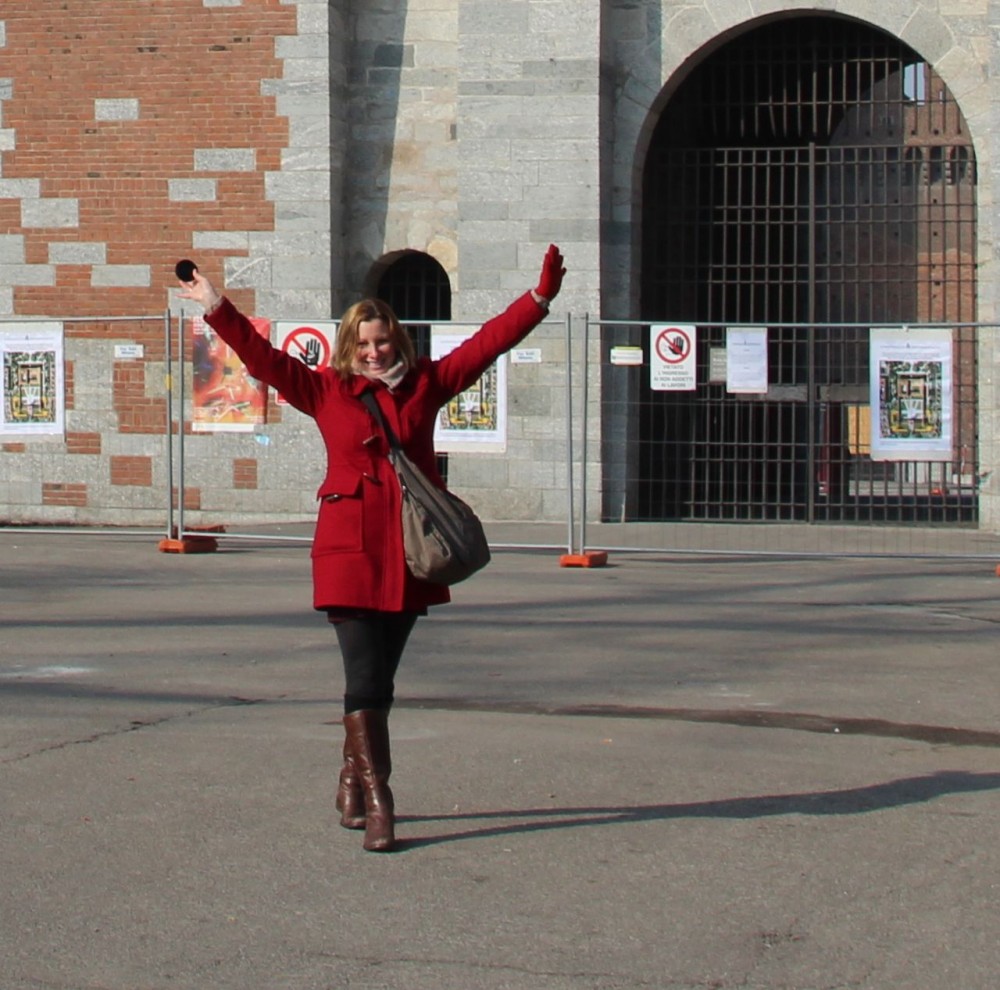The most memorable part of the Canal du Midi is enormous grey/green barked trees, reaching high above head. They guard the canal while offering shade to cyclists, fishermen, rowers, pedestrians and boaters alike. The roots of these giant trees hold the shores in place and help maintain the structure of the canal.
I was writing and researching the majestic plane trees struck by illness along the Canal du Midi, trying to find a link between the polluted water and the spread of the disease when Suzy Placet released a beautiful documentary saying exactly what needs to be said. Follow the link at the end of our post to view her documentary, the Plight of the Plane Trees.
Europe’s Platanus trees, also known as American sycamore, American planetree, western plane, occidental plane, buttonwood, and water beech, are plagued with a fungal disease thought to be brought over during the war in ammunition cases from America and since it has been spreading. Each year, hundreds of trees are replaced with resistant strains of the Plane trees in hopes to stop them from dying out. In North America, they stand out along BC’s beaches, with it’s rare exfoliating bark and have similar leaves to our Maple tree.
What I read online, is that it will take 20 years to change out all the trees, costing 1000€ per tree. The Canal du Midi is 240 kilometers long, making it an expensive and expansive repair.
With 42,000 trees planted in the 1830’s alone, the majority of the trees near 200 years old. In 1994 the Canal du Midi, with all it’s modern structures, amazing waterways connecting the Atlantic Ocean to the Mediterranean Sea, were declared a World Heritage Sight.
The site draws many tourists to France, where the canal wraps through vine-covered countryside, the route visits traditional villages, medieval and cathar ruins and beautiful 11th-14th century churches along its path. This untouched southern region takes you back in time, offering visitors a unique experience.
In Capestang, the trees along the main road were cut down from one end clear to the other do to the fungal plague, changing the overall look of the town. Locals grew up with these trees and feel attached to them. Many folks cried while they fell the trees in large sections along the canal, leaving it bare.
What about the water in the Canal du Midi?
As recently as the 1970’s people held swimming competitions in the canal, but now, sadly the water is too dirty. The boats empty their sewer tanks directly into the canal and the flow of the water is too slow to compensate the waste. Even the fisherman throw back their catch, not risking their health and there are accounts of dogs dying from drinking the slow sludgy waters. Not to mention the pesticides that flow from the vineyards, which causes the canal to glow fluorescent green once a year.
Does the dirty water of the canal contribute to the overall health of the trees? Would the trees have a better chance to fight the disease if the waters were clear?
I would love to see sewer-tank emptying stations along the shores of the midi, as well as a healthy number of petrol, fresh water filling and electric outlets for people to enjoy. Here in Capestang village a plan is in place to built up our mooring area with added services. A step in the right direction. If only the rest of the harbours and boat villages could do their part in cleaning up the canal.
If future generations are to see this World Heritage Site the health of the water and the trees need to be addressed. No matter the cost it should be a priority.
France is the #1 tourist destination of the world for a reason and I fear if this site goes to ruin, many people in southern France will lose their livelihood: from Gite and B&B owners like myself, to boat companies offering tours down the canal and all the stores and their services in between.
Here is the link to the wonderful documentary, The Plight of the Plane Trees, By Suzy Placet
This little film tells of the dreadful disease that threatens all the plane trees of Europe. The music is original and was written by David Russell Brown (visit his channel at POLHAS) The film won the “Prix Coup de Coeur” (“Love at First Sight”) prize in the 2012 edition of the Festival Film Amateur de Nature de Namur in Belgium.
Thank you Suzy for such a wonderful video!
That’s Hamori










